
Browse an alphabetical list of photographs. These historical images portray people, places, and events before, during, and after World War II and the Holocaust.
<< Previous | Displaying results 1231-1240 of 2641 for "Photo" | Next >>
An unidentified worker walks by the railroad tracks at the Im Fout labor camp in Morocco. Living conditions were harsh in the camp, and many of the workers fell ill with typhus. Im Fout, Morocco, 1941-42.
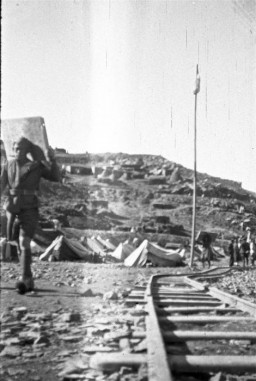
An American travel agency displays images of a peaceful Germany sent by the German Railways Information Office to attract visitors to the 1936 Olympic Games in Berlin. United States, prewar.
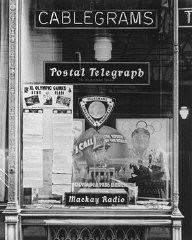
Henry Brauner (center) with his wife, Esther (second from right), pose with three friends in front of the entrance to the Stuttgart West displaced persons (DP) camp, 1945.
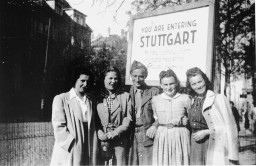
An official order incarcerating the accused in the Sachsenhausen concentration camp for the "offence" of homosexuality. Germany, July 1944. The Nazis posed as moral crusaders who wanted to stamp out what they labeled as the "vice" of homosexuality in order to help Germany win the racial struggle. They persecuted homosexuals as part of their so-called moral crusade to racially and culturally purify Germany.
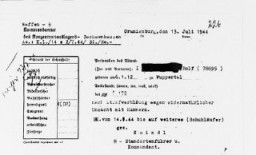
The IG Farben defendants hear the indictments against them before the start of the trial, case #6 of the Subsequent Nuremberg Proceedings. May 5, 1947.
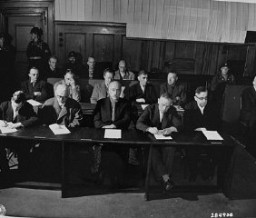
Blanka and Harry with their daughter Shelly, son-in-law, and granddaughter Alexis Danielle. San Diego, California.
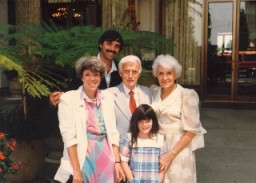
Defendant Inge Viermetz pleads not guilty at her arraignment during the RuSHA Trial, case #8 of the Subsequent Nuremberg Proceedings. October 10, 1947.
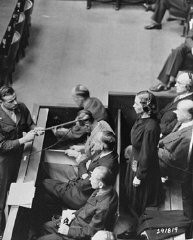
Ink and Blood by Arthur Szyk, 1944. Szyk portrayed himself at his desk, finishing off a still-struggling Adolf Hitler. Göring, Himmler, and Franco attempt to escape. In the wastebasket are the defeated figures of Mussolini, Laval, and Petain, whose regimes fell as a result of the Allied invasions. [Gift of Alexandra and Joseph Braciejowski]
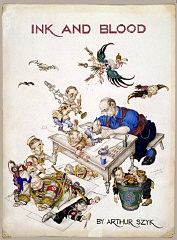
Insignia of the 101st Airborne Division. The nickname of the 101st Airborne Division, "Screaming Eagles," originates from the division's insignia, a bald eagle on a black shield. "Old Abe" was the eagle mascot of a Wisconsin regiment during the Civil War. The 101st was formed as a reserve unit in Wisconsin shortly after World War I and included "Old Abe" as part of the division's insignia.
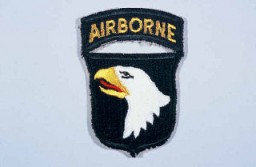
Insignia of the 103rd Infantry Division. The 103rd Infantry Division, the "Cactus" division, is so called after the 103rd's shoulder patch, a cactus in a gold circle. The cactus is representative of the states whose troops formed the unit in the early 1920s: Arizona, Colorado, and New Mexico.

We would like to thank Crown Family Philanthropies, Abe and Ida Cooper Foundation, the Claims Conference, EVZ, and BMF for supporting the ongoing work to create content and resources for the Holocaust Encyclopedia. View the list of donor acknowledgement.